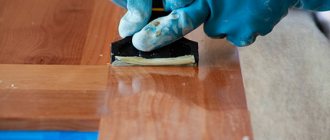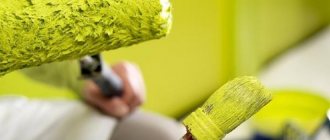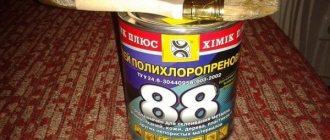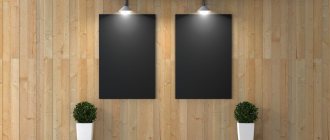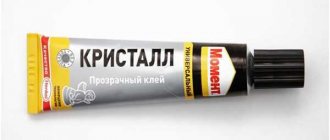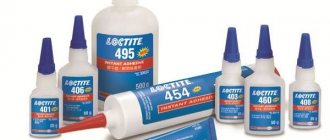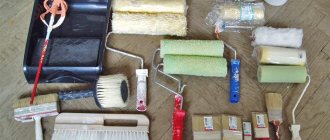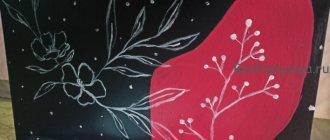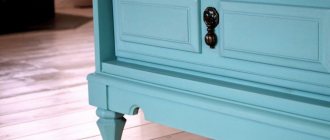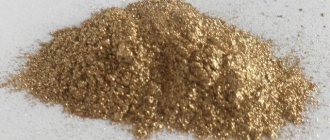There are two reasons:
- Destruction of lingin (the substance responsible for the density of wood) under the influence of UV rays. The material becomes brittle, the color is “washed out”, the surface turns white or gray.
- Alternating wetness and dryness . The material either swells or expands, the cracks that appear enlarge, fungal spores, insects, bacteria and mold get into them.
To reduce the likelihood of problems with furniture, it must be treated with a protective compound immediately after purchase, or before the first wintering. In the store you will find three types of products: paint, varnish and oil. We recommend the latter.
Protecting garden furniture - why is it needed?
If wood products are placed outside, they are regularly exposed to rain and wind. When humidity increases, wood swells, and after drying it shrinks, as a result of which the natural material cracks and becomes deformed. If outdoor furniture gets wet frequently, it will begin to rot and fungus will settle inside. The result will be loss of color, visual appeal, crumbling of chairs and tables.
UV rays are no less destructive for wooden terraces and garden furniture; as a result, the surface fades. The sun also destroys lignin in wood, making it brittle. Even untreated wood often harbors bugs and other insects, which greatly damages the product. What to do? Applying a protective coating can prevent such problems. There are several types of means, and it is best to carry out the work in several stages. Furniture protection is carried out as follows:
- the surface is thoroughly cleaned from dirt, dust, stains;
- if necessary, it is leveled;
- using fine sandpaper, roughness is added to enhance adhesion;
- a primer (impregnation) is applied, then a layer of paint and varnish.
How to choose the right one
Experts advise adhering to the following rules:
- Low-density species (linden and alder) prefer to deal with thick, saturated oils. Liquids can penetrate inside and not freeze there.
- For coniferous species, special impregnations are not needed. They have so much resin inside that they do not need additional protection. If absolutely necessary, you can use thick consistencies and use the waxing method.
- A distinctive feature of birch and beech is their high density. The first treatment should be with liquid products. Thick substances are suitable for repeated manipulations.
Before starting work, it is advisable to experiment on a small board.
To improve the functionality of a product, certain components can be added to it. To improve the absorbency of tung impregnation, it is enough to dilute it with white spirit in a ratio of 60% to 40%. To make linseed oil dry faster, add 30% turpentine to it and heat it a little. Sometimes wax is added to the substance. This increases the antistatic characteristics of the product and speeds up the drying process.
The choice of products is so large that you can get lost in its diversity. Improved new products are released annually. Where to buy the product? There are several options. The most acceptable way is to visit a specialized retail outlet, take a closer look at the assortment on display, and understand what it costs. If in doubt, you can consult the seller. He will not only help you choose, but will also calculate the required volume of the purchased product. You can use the services of an online store. The main thing is not to fall for the tricks of unscrupulous suppliers and not to purchase low-quality goods at a high price.
Pros and cons of painting
It is recommended to paint furniture if you decide to give the products a richer shade. Also, the painting option is suitable for old tables, chairs, beds - this way you can restore their attractive appearance. Paint will protect the wood from precipitation, atmospheric factors and the sun, but you only need to purchase special products. Good quality paint is the key to its even distribution, quick drying and long service life.
The disadvantages include the need for regular touch-ups or a complete change of coating, because sooner or later it will begin to peel off. Paint eliminates the feeling of naturalness, and the products will not look so harmonious.
Before painting, you must use impregnation; this is a prerequisite if the furniture has never been painted. Pre-treatment is done with sandpaper, but not rough. After soaking, moisture will not penetrate into the pores, and the furniture will not swell. If there is an antiseptic in the composition, the impregnation will help prevent the appearance of mold.
After applying the product, wait until it dries completely, then paint the objects in one layer. Next, sanding is performed again to remove the remaining “lint” - it appears as the coloring progresses. Then another layer of paint is applied and, if necessary, the products are varnished. Here are important tips for working:
- do not forget about processing the ends;
- do not work in rain, heat or extreme cold;
- for large areas, painting can be done with a spray gun;
- do not apply more than 3 layers, otherwise they will crack;
- Each layer of paint should be thin.
Application technology
To achieve the best effect, you must carefully follow the application technology. The surface must be cleaned and prepared, only in this way the coating will provide it with maximum strength and durability. Typically, oiling wood involves the following steps:
- thorough cleaning of the surface from dirt;
- alignment (if required);
- grinding with roughening (to improve adhesion);
- impregnation with antiseptic and primer compounds;
- applying oil in 2-3 layers.
If this is the first treatment, antiseptic treatment of the wood is a must. The protective drug will not allow microorganisms to multiply, even if the material becomes slightly moist during use. We recommend using YM M101 antiseptic, which provides comprehensive protection against all types of mold and microbes.
Tips for applying oil to wood surfaces:
- It is recommended to process wood in dry and warm, but not hot weather;
- the oil must be applied in a thin, even layer;
- It is advisable to limit yourself to 2-3 layers (if you apply more, a film prone to cracking may form);
- The ends should be processed with special care, since it is through them that moisture penetrates most intensively into the wood structure.
Varnish coating
The varnish has no color - it is completely transparent or enhances the natural shade of the furniture without reducing the natural beauty of the wood. The varnishes dry very quickly, are easy to apply, and provide high-quality protection from damage. A number of materials contain components that slow down the aging of wood. Varnishes come in the following types:
- matte;
- semi-matte;
- glossy.
How to cover the products must be decided individually. Glossy coatings shine the most, which gives an elegant look. Matte varnishes are more practical; scratches and dirt are less visible on them. If necessary, the varnish can be tinted in any shade, which will provide tables and chairs with an original look.
Compound
Vegetable oils are used to make the material:
skeleton
linen
soy
sunflower
As for wax, one of three types of this material is used to produce the product:
Carnauba
Extracted from the leaves of the Brazilian wax palm. Refractory material of increased hardness. It is safe to use because it does not emit toxic substances and does not cause allergic reactions. For this reason, oil with the addition of this type of wax can be used to treat wooden furniture even in children's rooms.
Candelilla
Extracted from the Canelilla bush. Refractory material, safe to use. Does not provoke the appearance of negative reactions in the body, does not emit toxic fumes. This, just like with the previous option, allows you to use oil and wax to treat furniture in children's rooms.
Bee
This wax, unlike the two previous materials, is not refractory. Its melting point is only +350C. However, its manufacturers also use it to make furniture polishes. This is not surprising, because the product helps level the surface, gives it an attractive shine, and creates reliable protection from external negative influences.
In addition to the main components, the material usually contains the following components:
- paraffin;
- solvents;
- driers - elements that reduce the drying time of the product;
- dyes - these elements are absent in colorless compositions;
- additives – protect the base from the negative effects of ultraviolet radiation, which prevents the surface from fading.
Oil for garden furniture
Wooden objects that are constantly outdoors should be regularly treated with special oils 1-2 times a year. They are produced by many manufacturers of paint and varnish products. According to reviews, oil coating will prevent objects from rotting or cracking. If the composition contains trans-oxide pigments, then it will perfectly protect against sun exposure. Expensive furniture must be treated with antiseptics and antifungal additives.
V33 oil
Designed specifically for outdoor furniture, V33 Huile Teck is a nourishing alkyd oil for outdoor use. It is suitable for treating tables, chairs, sun loungers, benches and other items, including those made from exotic species. The product protects from the sun, moisture, preserves the natural appearance of wood, and allows it to breathe. It is diluted with white spirit, and work with oil is carried out in a respirator.
Application order:
- wash the surface, dry it, sand it with fine-grained sandpaper;
- remove all dust remaining after sanding;
- if the wood has already been varnished, clean the varnish with special means to the state of natural wood;
- Shake the oil and apply it to the surface with a brush;
- Dry for 6 hours, apply a second coat.
Aquatex oil
“Rogneda Aquatex” is a natural-based oil-balm that can be used to process any wood products, as well as plywood, chipboard, OSB, and fiberboard. Contains a leave-in antiseptic. The product is distinguished by the ability to penetrate deeply into pores, which enhances protection against blackening, rotting, blue staining, fading and destruction. The surface remains breathable, while acquiring water-repellent properties. The oil is available in 9 different shades and does not need to be diluted. The product is environmentally safe.
Benefits of oils
Advantages of oil for treating garden furniture:
- The product, penetrating into the pores, restores the structure and preserves it in the future. The furniture looks natural.
- Water repellents prevent fungus from developing.
- Preservation of furniture in its original form for a long time.
Terrace with a swimming pool, impregnated with oil
Oil impregnates the furniture, therefore it is resistant to abrasion.
Waxing process
To wax wood surfaces you will need:
- wax preparation;
- brushes with different bristle hardness;
- solvent;
- grinding machine with emery and grinding wheels;
- polishing sandpaper;
- construction knife.
Operating procedure
- Without lingering on the damaged areas, use a sander to remove the surface layer over the entire area of the wood.
- To restore old parquet, large wide-format sanding machines are used.
- The cleaned surfaces are brought to complete cleanliness, removing minor defects with a construction knife or chisel.
- For waxing, use brushes of the required hardness, depending on the density of the product. The waxy substance is applied with a brush to the surface of the products, achieving uniform distribution of the composition. For large areas, use a roller.
- For final processing, the surface is ground with a velvet wheel until the desired degree of gloss is obtained.
Tips for preserving waxed furniture and hardwood floors
- it is necessary to regularly inspect the treated areas in order to detect violations of the integrity of the wax layer;
- prevent dust and contamination of the coating;
- in case of liquid spillage, you need to carefully remove the moisture with a soft cloth;
- do not delay the restoration of damaged waxed areas of wood, eliminate processing defects in a timely manner.
Why do you need to wax wood?
The bee product has the priority right to be called wax. The rest of the products are artificial products of the chemical industry. Furniture and any wooden surfaces are subject to various physical impacts. This can cause minor damage (scratches, cracks) and lead to loss of presentation. Wood tends to release vapors from the internal structure of the material into the atmosphere, which causes cracks and drying out.
Since ancient times, people have polished floors and furniture with beeswax. A layer of greasy product masked small cracks and prevented the depletion of the wood mass due to evaporation. The process of treating surfaces with wax is called waxing. For many decades there has been an increase in the need for bee products, which have become scarce. As a result, new compositions were invented that were superior in properties to natural wax.
